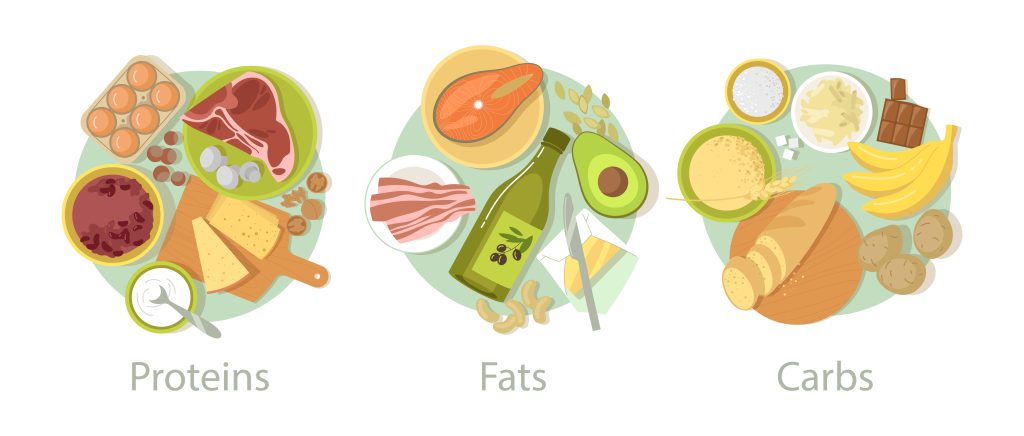Learn How the Keto Diet Works, Its Key Benefits, and Essential Tips to Kickstart Your Journey
The keto diet, short for the ketogenic diet, has gained immense popularity for its ability to promote weight loss, improve health, and support energy levels.
But what precisely is the keto diet, and how does it operate?
Whether you’re just starting or want to deepen your understanding of keto, this guide covers everything you need to know, from its basics to its benefits.
By the end of this article, you will be equipped with essential insights into ketosis, how to maintain a keto diet plan, and tips for success, along with its potential health benefits.
What Is the Ketogenic Diet?

The ketogenic diet is a high-fat, balance-protein, and low-carbohydrate eating strategy. It was originally developed in the 1920s to help manage epilepsy in children but has since gained traction as a weight-loss method and health-improving diet for the general public.
The core principle of the diet keto plan is to shift your body into a state called ketosis. This metabolic process occurs when your body runs out of glucose (sugar) from carbohydrates for energy and begins to break down fats into molecules called ketones.
These ketones then become the body’s primary source of fuel.
Key Components of the Keto Diet:
High in Fats: 70–80% of your daily caloric intake comes from fats (avocados, nuts, oils, etc.).
Moderate in Protein: 15–20% from proteins (meat, poultry, fish, eggs).
Low in Carbohydrates: Less than 10% from carbohydrates (mostly from vegetables like spinach, broccoli, and zucchini).
What Is Ketosis?

Ketosis is the metabolic state where your body switches from burning carbohydrates to burning fat for fuel. When you restrict carbs in your diet, glucose levels drop, and your liver starts producing ketones from stored fat.
How to Enter Ketosis:
Lower Your Carb Intake: Consuming 20-50 grams of carbs per day helps to initiate ketosis.
Increase Healthy Fat Consumption: Eating foods rich in healthy fats will help sustain energy levels.
Maintain Moderate Protein: Excessive protein intake can be converted into glucose and may disrupt ketosis.
Stay Hydrated: Drink plenty of water, as ketosis may increase water loss and lead to dehydration.
Once in ketosis, your body burns fat efficiently, aiding weight loss and improving overall energy.
Top Benefits of the Keto Diet

A. Accelerated Weight Loss
One of the prior causes people turn to keto is weight loss. Since your body is burning fat for fuel, you naturally shed excess body fat, particularly around the abdominal area. Studies recommend that those pursuing the keto diet lose more weight compared to those on low-fat diets.
B. Improved Mental Focus
Ketones provide a steady source of energy to the brain, enhancing mental clarity and focus. Many people on the keto diet report better cognitive function and productivity.
C. Reduced Hunger and Cravings
High-fat and moderate-protein meals are more satiating than carbohydrate-heavy foods. This can reduce hunger, control cravings, and make it easier to stick to your eating plan without feeling deprived.
D. Stabilized Blood Sugar Levels
The keto diet plan is particularly beneficial for those with type 2 diabetes or insulin resistance. Reducing carb intake stabilizes blood sugar levels, and insulin sensitivity improves, potentially reversing diabetes in some individuals.
E. Increased Energy Levels
Switching to fat for fuel can provide a more sustainable energy source than carbohydrates, which are burned quickly and lead to energy crashes. People on keto often report increased stamina and fewer energy slumps.
F. Enhanced Heart Health
While it may seem counterintuitive given the high-fat content, research suggests that the keto diet can improve heart health. Consuming healthy fats like avocados, olive oil, and nuts may increase HDL (good) cholesterol and lower triglycerides.
G. Improved Skin Health
Inflammation and acne are often linked to high carbohydrate diets. By reducing carbs and sugars, the ketogenic diet may help improve skin conditions such as acne and eczema.
The Keto Diet Plan: How to Get Started

Transitioning to keto may seem daunting, but with a solid plan, it’s entirely manageable. Here’s a step-by-step guide to starting your keto journey:
A. Calculate Your Macros
Macros, short for macronutrients, are the foundation of the keto chart. You will need to calculate your daily intake of fats, proteins, and carbs. Typically, the breakdown should look like this:
Fats: 70-80%
Proteins: 15-20%
Carbs: 5-10%
B. Stock Up on Keto-Friendly Foods
Stock your pantry with high-fat, low-carb foods like:
Fats: Coconut oil, olive oil, avocados, butter
Proteins: Grass-fed meat, eggs, fish
Veggies: Leafy greens, broccoli, cauliflower
Snacks: Nuts, seeds, cheese
Avoid processed foods, sugary snacks, and high-carb items like bread, pasta, and sugary drinks.
C. Plan Your Meals
Meal planning is key to staying on track. Preparing meals in advance helps ensure you stick to your keto goals without resorting to unhealthy options. Include a variety of foods to prevent boredom and nutritional deficiencies.
Common Mistakes to Avoid on Keto
Starting the keto diet can be overwhelming, and many beginners make a few mistakes. Here’s what to avoid:
A. Not Getting Enough Electrolytes
In the early stages of ketosis, your body loses water and electrolytes, leading to symptoms like fatigue, muscle cramps, and headaches, also known as the “keto flu.” To combat this, increase your intake of sodium, potassium, and magnesium.
B. Consuming Hidden Carbs
Many packaged foods labeled as “low-carb” or “keto-friendly” may still contain hidden carbs. Always check the ingredient list and nutrition labels.
C. Eating Too Much Protein
Excess protein can turn into glucose through a process called gluconeogenesis, which can kick you out of ketosis. Stick to moderate protein consumption.
Keto Diet FAQs: Your Burning Questions Answered
A. Can I Follow the Keto Diet Long-Term?
Yes, but it’s essential to do so under medical supervision. Some people follow strict keto for months, while others switch to a more relaxed version (low-carb, high-fat) after reaching their goals.
B. Is Keto Safe for Everyone?
The keto diet is generally safe for most people, but it’s not suitable for individuals with certain medical conditions, such as gallbladder disease or liver issues. Always consult your doctor before starting any new diet.
C. What Is the Difference Between the Keto Diet and Other Low-Carb Diets?
While both limit carbohydrate intake, the keto diet focuses on increasing fat consumption and achieving ketosis, whereas other low-carb diets may not emphasize high-fat intake.
Keto Diet Chart: Visualizing Your Macronutrients
A keto chart can help you visualize your daily intake of fats, proteins, and carbs. You can use apps like MyFitnessPal or Carb Manager to track your macros and stay on track.
Final Thoughts:
The keto diet is a powerful tool for weight loss, better mental clarity, and overall improved health. By understanding the ketogenic diet and how ketosis works, you’re well on your way to achieving your health and fitness goals. Stick to your keto diet plan, track your progress with a keto chart, and avoid common mistakes, and you’ll be set for success.
Remember, like any diet, consistency and patience are key.
Embrace the process and reap the rewards of a healthier you!
The above-used pictures are the product of FreePIK.

